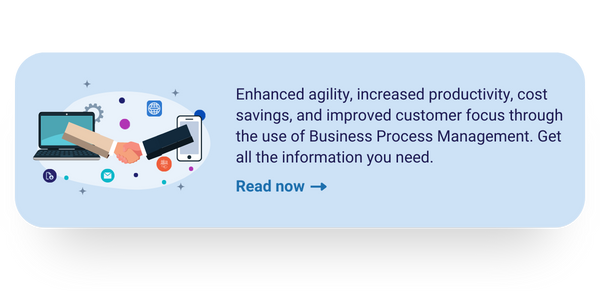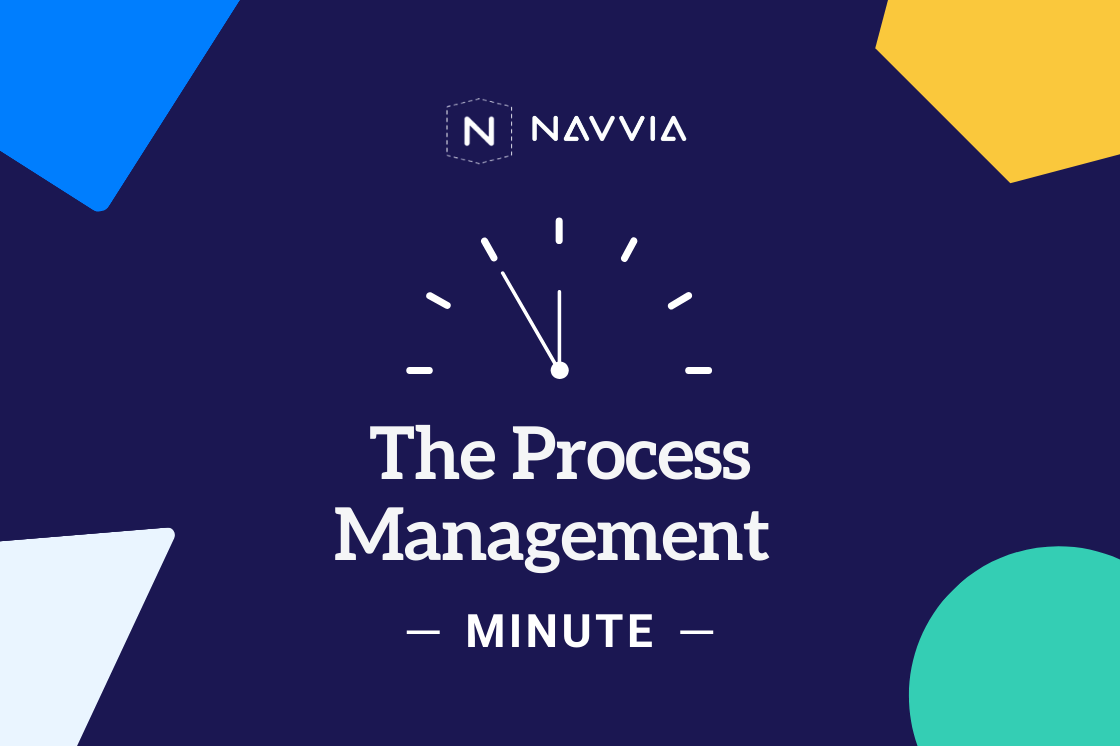The Importance of Business Process Change Management
Business process change management involves implementing a business process through Organizational Change Management (OCM) practices.
Digital Transformation and Business Process Automation are key priorities for CIOs worldwide.
At the core of these initiatives is the definition and implementation of business processes.
However, the data illustrates that almost 80% of digital transformation or process automation projects fail to meet the desired outcomes.
Some of the common reasons for this include:
- the lack of active executive sponsorship,
- unrealistic expectations,
- poor project management skills,
- undefined business processes, and
- undocumented requirements.
Nonetheless, the most crucial reason for failure is often the absence of an organizational change management process.
What is Busines Process Change Managent?
Business Process Change Management refers to the use of organizational change management practices to introduce new or improved processes to an organization.
So why is business process change management necessary?
All companies experience a certain level of organizational inertia. They become accustomed to operating in a particular way, and making changes requires a significant amount of effort.
An oil tanker provides a good analogy for this phenomenon. Once the ship has set sail, it requires a considerable amount of energy to change its course.
The same holds true when changing or implermenting business processes. One of he most common questions is "things are working well; why do we have to change?"
Employees become anxious wondering how this business process change will affect them.
The objective of business process change management is to encourage individuals to willingly participate in the change.
A significant aspect of change management is effective communication. It is essential to inform people about the reasons why a change is necessary, how the change will impact them, what benefits they can expect, and how they can contribute to the change.
Changes can vary in size and scope, from minor adjustments to a process to major transformations in how a business operates.
Regardless of the type or degree of change, effective change management is essential to overcome resistance and achieve widespread adoption. The extent of organizational change management (OCM) required will depend on the magnitude of the change.
Organizational Change Management (OCM) is a widely recognized area of expertise with an abundance of resources available to those seeking to develop their knowledge and skills.
There are numerous published works on the subject, which document proven best practices.
Additionally, there are various courses and certification programs available to help individuals acquire a deeper understanding of OCM.
Many organizations also rely on consultants who specialize in OCM to guide them through the process of change management.
Organizational Change Management Models
Several models provide an excellent framework for managing organizational change. These models can make a wonderful addition to your Business Process Management toolbox. Some of the more popular ones include:
- ADKAR is a model for implementing organizational change focused on the five outcomes of; Awareness, Desire, Knowledge, Ability, and Reinforcement.
- Dr. Kotter's 8-step process came from decades of observations and research by this Harvard Business School professor. The steps include; creating a sense of urgency, building a guiding coalition, forming a strategic vision, enlisting a volunteer army, enabling action by removing barriers, generating short-term wins, sustaining acceleration, and instituting change.
- Lewin's Change Management Model. This model is a three-phase approach to change management. Phase one is to unfreeze the status quo. Phase two is making the transition. Phase three is to freeze the change in place.
- McKinsey's 7-S Model looks at the balance between seven organizational elements. These elements include structure, strategy, systems, skills, style, staff, and shared values. Originally developed as an analysis tool, this method has proven to help implement significant change.
The Basics of Organizational Change Management
At their core, most of these change models follow a similar philosophy. Here are some key takeaways from the various models that can help you on your change management journey.
- Explain why the change is essential. Anyone with children knows that when you ask them to do something, the first thing they say is why. People don't like doing things blindly, and failure to explain why opens the doors to speculation and misinformation. Check out this Ted Talk by Simon Sinek on the importance of starting with the why!
- Discuss "what's in it for me" (WIIFM). Along with knowing why the change is essential, employees must also understand how they will benefit from it. It's important to note that the WIIFM can change depending on the audience. How the head of sales will benefit from the change can be very different from how a finance clerk will. Constantly communicate the benefits in the language of your audience.
- Let the staff know how the impacts. One of the ways to alleviate fear is to identify how an employee will be affected. They will want to learn what's expected of them and how their job may change. Let them know how the change may impact the organizational structure.
- Solicit assistance in selling the change. Start by getting someone who is a recognized authority in the space, and people will listen to what they say. Get the help of well-liked and respected employees. If they are on board, others will follow. Get consensus from key stakeholders, as people will tend to follow the crowd. In his work on the Science of Persuasion, Dr. Robert Cialdini identified several principles that can help you sell the value of a change.
- Keep communication lines open. It is essential to develop a comprehensive communication plan that addresses all phases of the change, from initiation to completion. Hold kickoff meetings with the staff. Hold regular communication sessions where you can update everyone on the project's progress. Weave communication into the day-to-day interactions with the team. Solicit feedback regularly. It's not enough to tell people the change is coming. They need constant and consistent communication throughout the life of the project.
- Celebrate quick wins. One of the best ways to keep the momentum going is by structuring your project to include quick wins. These wins can demonstrate progress and build excitement for the overall project. Once people see the benefits, they will want to jump on board.
- Lock in the change. Organizational Change Management doesn't end with the project is over. You must institutionalize the transition into the organization. Your ongoing management strategy should include developing Key Performance Indicators from which you can measure success. Management plans must consist of constant measurement and continuous improvement.
BPM and Change Management
We started this article by discussing the importance of Organizational Change Management to the success of a Digital Transformation or Process Automation project. So how does this relate to Business Process Management? Having well-defined and managed processes is at the heart of any Process Automation or Digital transformation project.
To learn more, check out this article on how BPM and becoming a Digital Enterprise. Also, learn more about the benefits of Business Process Management.
Digital transformation and process automation will continue to be the top priorities for businesses in the near future. It's important to consider business process change management when undertaking such initiatives. Business process change management can help you gain support for the change, facilitate a smooth transition, and ensure widespread adoption. 


